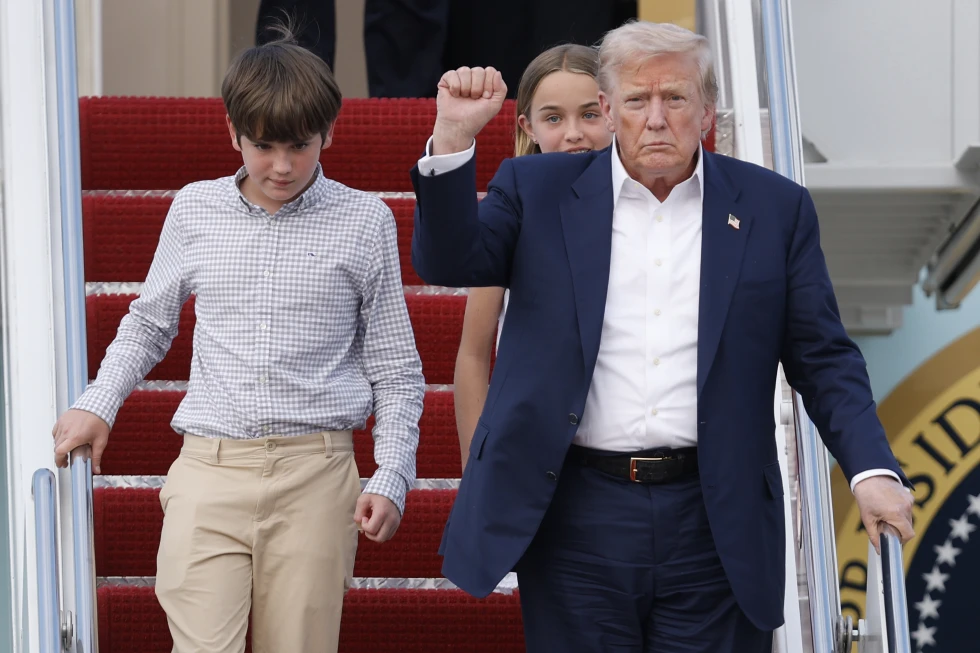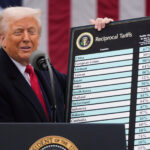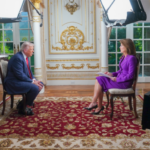US Economy Grows 3% in Q2 Despite Trade Turbulence/ Newslooks/ WASHINGTON/ J. Mansour/ Morning Edition/ The U.S. economy posted a strong 3% annual growth rate in Q2 2025, defying predictions of slower recovery. The rebound follows a first-quarter contraction driven by Trump’s trade-related import surge. A sharp drop in imports and stabilized consumer spending fueled the unexpected expansion.

U.S. Q2 GDP Rebound – Quick Looks
- U.S. GDP rose 3% from April to June 2025
- Strongest growth since Trump trade tariffs hit in Q1
- First-quarter GDP contracted by 0.5%, mainly from import surges
- Import collapse in Q2 added over 5 percentage points to GDP
- Consumer spending rose 1.4%, modest but better than Q1
- Private investment plunged 15.6%, worst since pandemic
- Inventory drawdowns reduced growth by 3.2 percentage points
- Economists had forecast only 2% growth for Q2
- Trade volatility remains a concern for future quarters
- Commerce Department report reflects post-tariff market adjustments
Deep Look: U.S. Economy Surges 3% in Second Quarter Despite Tariff Fallout
WASHINGTON, D.C. — July 30, 2025 — The U.S. economy staged an unexpectedly strong comeback in the second quarter of 2025, expanding at a 3% annual rate after a shaky start to the year. The sharp rebound — reported Wednesday by the Commerce Department — caught many economists off guard, as early forecasts had predicted only 2% growth.
The performance marks a significant turnaround from the first quarter’s 0.5% decline, a drop largely caused by import distortions stemming from President Donald Trump’s tariff policies. Businesses rushed to stockpile foreign goods early in the year ahead of widely anticipated tariffs, temporarily inflating import figures and dragging down GDP.
“This was a reset,” said one senior economist at Morgan Stanley. “Imports fell off a cliff in Q2, and that alone added serious horsepower to the GDP number.”
Imports Plummet, Boosting GDP
From April through June, the U.S. saw its largest quarterly drop in imports since the early months of the COVID-19 pandemic. Because imports are subtracted from gross domestic product calculations, the sudden downturn added over 5 percentage points to GDP — making it the single largest driver of second-quarter growth.
This dramatic shift highlights the unpredictable impact of Trump’s ongoing global tariff revisions, which have seen U.S. importers racing to adapt to changing duties on goods from countries like India, China, Brazil, and members of the European Union.
Consumer Spending Rebounds, But Slightly
Meanwhile, consumer spending, which accounts for roughly two-thirds of U.S. economic activity, rose at an annual rate of 1.4%. Though far from robust, this improvement over Q1’s meager 0.5% increase offered signs of resilience in the face of elevated interest rates, inflation pressure, and lingering global supply issues.
Retail activity saw modest growth, while spending on services such as healthcare and travel remained relatively stable. However, households remain cautious, and inflationary worries could limit future gains.
Investment Takes a Hit
While the overall growth headline was positive, the picture wasn’t uniformly rosy. Private sector investment plunged by 15.6% — the steepest drop since pandemic lockdowns brought capital projects to a standstill in 2020.
A key contributor to the decline was a reduction in inventories, as businesses depleted goods they had stockpiled in anticipation of trade-related disruptions. That drawdown subtracted 3.2 percentage points from the quarter’s growth rate.
“This was a whiplash effect,” noted an analyst with Moody’s. “We saw businesses over-order in Q1, and now they’re adjusting back.”
What’s Ahead?
The second-quarter growth is undeniably strong, but economists caution that structural uncertainties remain. The volatility introduced by President Trump’s expanding trade policies, especially new tariffs and penalties, makes forecasting difficult.
Higher prices on imported goods could eventually erode purchasing power and dampen consumer confidence. Moreover, global retaliation or supply chain bottlenecks could emerge in the second half of the year.
Still, Wednesday’s GDP report brings some relief to a White House looking for positive economic news amid criticism of its trade stance and its record federal deficit. Trump’s team argues that tariff revenues and reshored manufacturing will help balance the budget and protect American jobs in the long run.
“The economy is adjusting. It’s not smooth, but it’s working,” a senior administration official said.
Economists Weigh In
The economic community remains divided. Some praise the GDP gain as a natural correction following the Q1 tariff shock, while others fear a fragile, uneven recovery with limited staying power.
“If this bounce is mainly driven by collapsing imports,” warned an economist at Wells Fargo, “then it’s a one-time bump — not a signal of durable growth.”
Still, with unemployment stable, inflation easing modestly, and now a solid Q2 GDP number, the broader picture appears cautiously optimistic. Much now depends on how consumers and businesses respond in the coming months as new trade policies continue to roll out.







